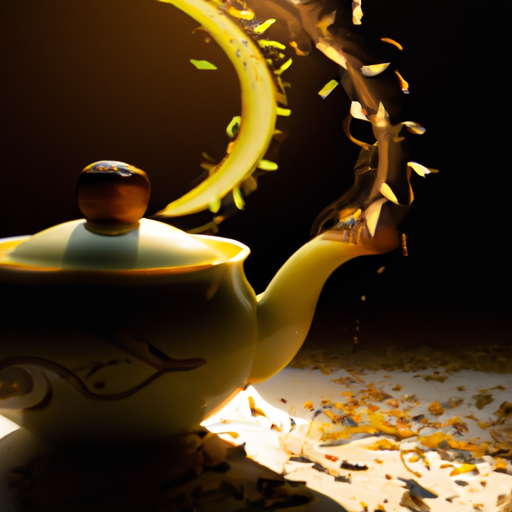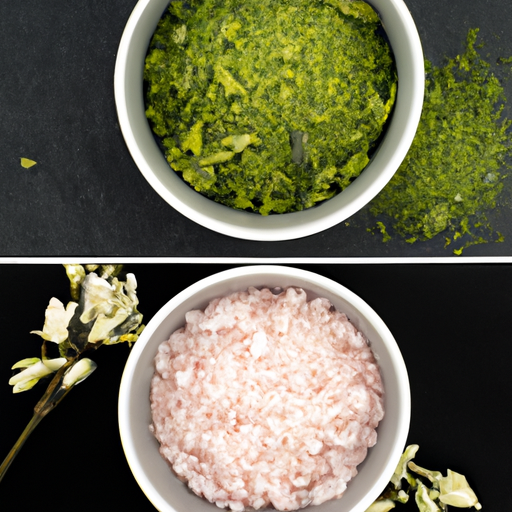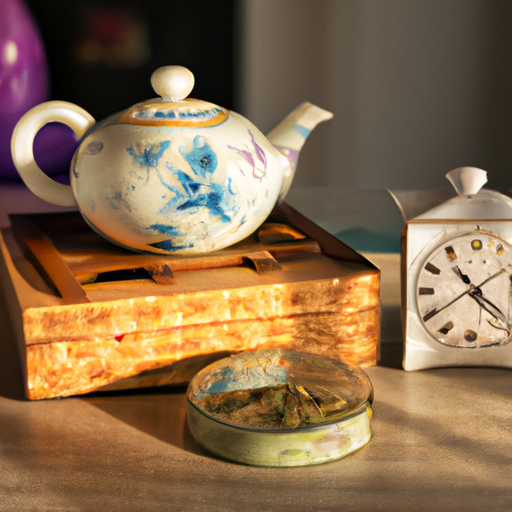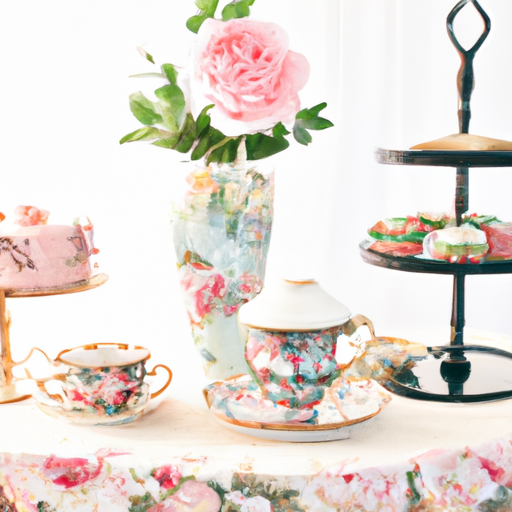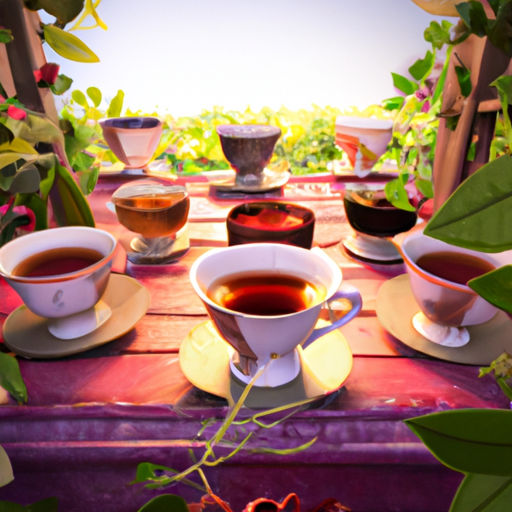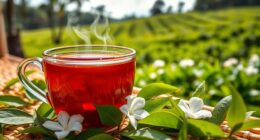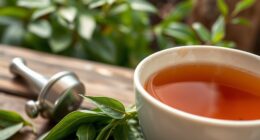Brewing the perfect cup of tea is an art that requires precision, attention to detail, and the right tools.
Imagine the tantalizing aroma of fresh tea leaves, the gentle sound of boiling water, and the anticipation of that first sip. It’s a moment of pure indulgence, where every sip is a sensory delight.
In this article, I will guide you through the art of brewing the perfect cup of tea, sharing my knowledge and expertise to help you create a truly exceptional tea experience.
From choosing the right equipment, such as a kettle with variable temperature settings, to preparing the tea leaves with care and precision, we will explore the techniques that elevate a simple cup of tea into a work of art.
So, grab your favorite teapot and let’s embark on a journey into the world of tea perfection.
Key Takeaways
- Attention to details such as timing, temperature, and clean teaware is crucial for making a perfect cup of tea.
- Invest in a good kettle with features like variable temperature and keep warm for boiling water.
- Choose high-quality tea leaves and use fresh spring water for the best flavor.
- Proper steeping time and temperature, as well as the use of the right amount of tea leaves, are essential for a flavorful cup of tea.
Choosing the Right Equipment
I need to choose the right equipment to ensure I can make the perfect cup of tea. Exploring different teaware options is essential in finding the one that suits my preferences.
A teapot with an infuser or a strainer can be used to brew loose leaf tea, allowing the leaves to steep and release their flavors. Additionally, investing in a kettle with features like variable temperature and keep warm is crucial for boiling water at the ideal temperature for different types of tea.
Another important factor is the water I use. Using filtered water is key to achieving the best flavor in my tea. It removes any impurities that might affect the taste, ensuring a clean and pure brew.
By paying attention to these details and selecting the right equipment, I can start my tea-making process on the right foot and brew the perfect cup of tea every time.
Preparing the Tea Leaves
To prepare the tea leaves, start by measuring the desired amount according to the instructions on the packaging. The quality of the tea leaves plays a vital role in brewing the perfect cup of tea. When selecting tea leaves, it’s important to choose high-quality ones as they’ll always taste better and provide a more intense aroma when placed in a heated teapot.
Look for leaves that are whole and unbroken, as this indicates freshness and optimal flavor. Understanding the importance of tea leaf quality is crucial in achieving a delicious cup of tea. Whether it’s black, green, or herbal tea, investing in good quality tea leaves will ensure a satisfying and enjoyable tea drinking experience.
So take the time to select the best tea leaves available to truly elevate your tea brewing skills.
Brewing and Steeping Techniques
When brewing tea, it’s important to consider the steeping time and water temperature for optimal flavor extraction. Steeping for too long or using water that’s too hot can result in a bitter taste.
To avoid common mistakes and enhance the flavor of your tea, here are some tips:
-
Experiment with different steeping times: Different teas require different steeping times, ranging from 1-10 minutes. Start with the recommended time on the packaging and adjust to your taste preferences.
-
Use the right water temperature: Water temperature affects the extraction of flavors from the tea leaves. Green teas generally need lower temperatures around 175°F (80°C), while black teas can handle higher temperatures around 200°F (93°C).
-
Try cold steeping: Cold steeping is a method where tea leaves are steeped in cold water for a longer period of time. This technique can result in a smoother and less bitter flavor.
By following these tips, you can avoid common mistakes and enhance the flavor of your brewed tea. Enjoy the perfect cup every time!
Frequently Asked Questions
How can I enhance the flavor of my tea without adding sugar or milk?
To enhance the flavor of tea without adding sugar or milk, try pairing it with complementary flavors like citrus, herbs, or spices. For example, adding a slice of lemon or a sprig of mint can add a refreshing twist to your tea.
Is it necessary to preheat the teaware before brewing tea?
Preheating teaware is essential for brewing tea. It helps maintain the desired brewing temperature, ensuring optimal flavor extraction. Without preheating, the teapot can cool the water too quickly, resulting in a weaker and less flavorful cup of tea.
Can I reuse tea leaves to make another cup of tea?
Yes, you can reuse tea leaves to make another cup of tea. This is called brewing multiple infusions. Simply steep the leaves again, adjusting the steeping time and water temperature as needed for subsequent infusions.
What is the best way to store tea leaves to maintain their freshness?
To maintain the freshness of tea leaves, it’s important to store them properly. This involves choosing the right tea storage containers, which should be airtight and opaque to prevent oxidation. Properly sealing tea bags can also help preserve their flavor and aroma.
Are there any alternative methods to brewing tea besides using a teapot or infuser?
Yes, there are alternative brewing methods and unconventional tea brewing techniques. Some options include using a tea filter or infuser, steeping the leaves in a mug and straining, or even cold steeping.
Conclusion
In conclusion, brewing the perfect cup of tea is an art that requires attention to detail and proper technique. By investing in the right equipment, such as a high-quality kettle and teapot, and using fresh spring water, one can enhance the flavor and aroma of the tea.
Preparing the tea leaves correctly and following the recommended steeping times ensures a satisfying brew. Remember to clean teaware immediately after use and experiment with optional additions like sugar or milk.
Just like a well-crafted painting, the art of brewing tea requires patience, skill, and a dash of creativity.

